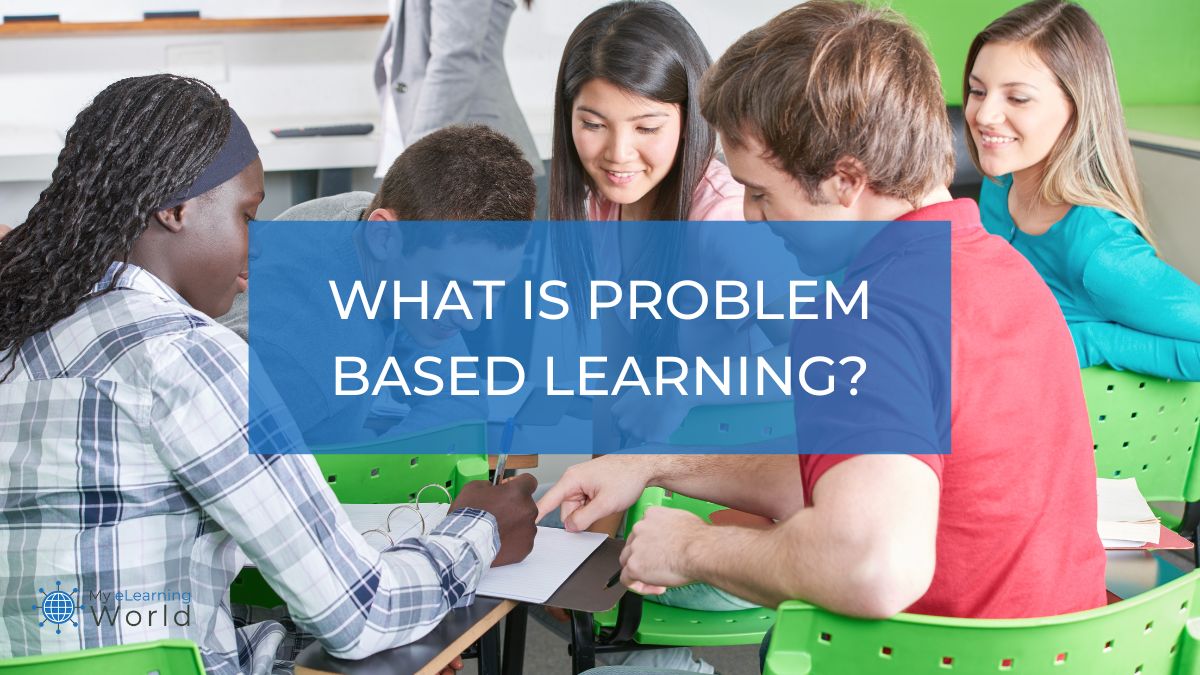As an educator, you’re always looking for the most effective ways to help your students master the material and develop the skills they need to succeed. With so many different instructional approaches to choose from, it can be tough to decide which one is right for your class. One approach that has shown promise in a variety of educational settings is problem-based learning (PBL) — a method that involves having students work through real-world, open-ended problems and scenarios as a means of learning new concepts.
In fact, studies have shown that problem based learning is often more effective than traditional lecturing.
How can you use problem-based learning it as a teacher, instructional designer, course creator, or trainer? In the guide below, I’ll talk more what problem-based learning is, how it can be used in the classroom, its pros and cons, and more.
What is Problem-Based Learning?
With problem-based learning, students work on a real-world, open-ended problem or issue and try to solve it.
By challenging students to come up with solutions to real problems, they learn to think critically and creatively. They also learn to work together and communicate effectively.
This form of experienced-based education can help students better master the material and develop the skills they need to succeed in college and their careers.
In my experience, when students are engaged in problem-based learning, they tend to be more motivated and enthusiastic about learning. And they retain information better too.
When using PBL, the instructor’s role switches from the more conventional paradigm. The teacher gives relevant content, tells the class what has to be done, and offers excellent knowledge for solving a particular problem.
The instructor serves as a facilitator in PBL. The learning is student-driven, intending to address the issue (note: the problem is established at the onset of learning instead of being presented last in the traditional model). Furthermore, the tasks range from a few weeks to a semester, with daily instructional time dedicated to group work.
If you’re looking for a way to help your students learn more effectively, problem-based learning may be the answer.
How to Use Problem-Based Learning in the Classroom
There are a few different ways you can incorporate problem-based learning into your classroom.
One option is to have students work on problems individually or in small groups.
Another option is to use problem-based learning as a whole-class activity.
This is a great way to get all of your students engaged and involved in the lesson.
Before you can implement problem-based learning, you should:
- Identify what it is exactly that you want the students to learn
- Determine what real-world problem or issue you want them to solve that ties into the learning objective.
- Come up with a plan and rules for how the students will work together on the problem.
- Define how the assignment will be evaluated.
Once you have a plan in place, you can start incorporating problem-based learning into your lessons.
The Pros and Cons of Problem-Based Learning
When it comes to teaching, there’s no one-size-fits-all approach.
What works for one teacher in one classroom might not work for another teacher in a different classroom.
The same goes for problem-based learning. While this instructional approach has its benefits, there are also some potential drawbacks to consider.
Pros of Problem-Based Learning:
- Helps students learn how to think critically and solve problems
- Encourages students to be creative
- Teaches students how to work together
- Helps students learn how to communicate effectively
Cons of Problem-Based Learning:
- May be challenging for some teachers to implement
- May be too much for some students who struggle with problem-solving
- If not done correctly, can lead to students feeling overwhelmed or frustrated
Before you decide to use problem-based learning in your classroom, weigh the pros and cons to see if it’s the right instructional approach for you and your students.
Final Thoughts on Problem-Based Learning
Problem-based learning (PBL) is a student-centered teaching method that encourages students to learn by actively solving real-world problems.
Unlike traditional instructional methods, PBL does not focus on delivering content but rather on facilitating student learning through problem-solving.
This type of learning has been shown to be particularly effective in promoting higher-order thinking skills such as critical thinking and creativity.
In addition, PBL can help to build students’ confidence and self-efficacy as they learn to tackle challenging problems.
For teachers, PBL can be a useful tool for differentiating instruction and meeting the needs of all learners.
When designed and implemented effectively, PBL can provide an engaging and rewarding learning experience for both teachers and students.
Other Useful Resources
- What is Adaptive Learning?
- What is Inquiry Based Learning?
- What is Just in Time Learning?
- What is Microlearning?
- What is Project Based Learning?
- What is Service Learning?
Do you have any experience using problem-based learning in your classroom? Share your thoughts by leaving a comment below.
- Elevating Your Virtual Presence: Why EMEET’s SmartCam S800 Stands Out in Modern Communication - 06/04/2025
- US Teachers Will Spend $3.35 Billion of Their Own Money on Classroom Expenses in 2025-25 School Year - 06/04/2025
- Report: Leveraging AI Tools Could Help US Teachers Avoid $43.4 Billion of Unpaid Overtime Work - 06/04/2025


